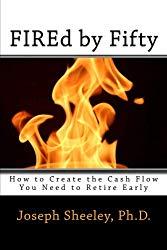 Ask SmallIvy
Ask SmallIvy
Dear SmallIvy,
What does it mean if a stock requires 100% maintenance margin? Would you include an example of a situation? Thank you
Thanks,
Ashley
(Note, this site contains affiliate links. When you click on an affiliate link and buy something, The Small Investor will get a small commission for the referral. You are charged nothing extra for the purchase. This helps keep The Small Investor going and free. I don’t recommend any products I do not fully support. If you would like to help but don’t see anything you need, feel free to visit Amazon through this link and buy whatever you wish. The Small Investor will get a small commission when you do, again at no cost to you.)
Hi Ashley,
Before we get into maintenance margin, let me talk about margin accounts in general. A margin account is one where the broker lets you borrow money from them, called “going on margin.” Because this practice caused a lot of trouble during the Great Depression, there are now a lot of regulations on margin accounts that were enacted in the 1930’s. In particular, you must put up a certain percentage of the loan when you take it out, then keep a certain percentage of the loan in the account at all times. For example, you would probably be required to put up 50% of the value of the money you were borrowing to buy a position, Securities laws require a certain percentage be put up, but your brokerage firm may require an even higher percentage. The higher the percentage, the lower their risk and your risk. Let’s see how this works with an example:
Let’s say that you wanted to buy 1000 shares of XYZ corporation, which is currently trading at $10 per share, for a total cost of $10,000. You decide that you’ll buy it on margin, so you put up $5,000 and borrow the other $5,000 from your broker. Let’s now say that the stock goes up to $20. You could then sell the stock for $20,000, pay your broker back the $5,000, and make a nice $10,000, 200% profit. If you had instead put up the whole $10,000 for the stock, you would have still made $10,000, but that would only be a 100% profit on your money. This is why margin is useful – it allows you to magnify your gains when stocks go up.
But let’s now say that the stock went down to $5 instead of up. Now, your stock position would only be worth $5,000. You would still owe your broker $5,000, so if you sold the position now, you would have lost all of your original $5,000 investment. This is why margin is bad – it causes you to lose large percentages of your money when things go wrong. Still, you could just decide to hold onto your position and hope it goes back up. Perhaps things will change and it will go back up to $10 and then some.
But wait, it gets worse, and therein lies the answer to your question. When the stock drops, it is all your money that is considered lost. The brokerage house would still have $5000 regardless of what happens to the stock. If the stock drops from $10 to $9, you would have lost $1,000 and have a position worth $4000, while the brokerage house would still have a position worth $5,000. Plus, they would charge you interest for the money you’ve borrowed the whole time. Now, obviously, if the stock dropped below $5, all of your money would be gone and the brokerage house would start losing money. This is the reason for maintenance margin. You are required to maintain a certain percentage of the position in your account at all times, called a maintenance margin. Typically this maintenance margin is at least 25% of the original investment. Looking back at our example, you would need to have at least $2500, or 25% of the original $10,000 investment, in your account at all times.
If the stock dropped to $7.50, because you would have lost $2500, you would now only have $2500 in the position and be at the limit. If the stock dropped further you would be subject to a margin call, where your broker would call (or email) you and say that you must add additional money to the account. If you didn’t add the additional funds, they would sell the shares, take back their $5,000, and leave you with whatever was left. Even if the stock went back up to $10 the next minute, you would be stuck with the loss. This was one of the worst things about the crash during the Great Depression. If stocks had just gone down in 1929 and investors owned the shares outright like they did in 2008, people could have just held onto their shares and probably have been right back where they were before the crash within a year or two. This is what happened in 2008. Because of margin calls, however, they lost all of their money and then had their positions sold by the brokerage houses, so they had no chance to recover. Margin requirements at that time were not regulated so they might have only had a 10% maintenance margin. It didn’t take much of a drop at all to cause a margin call and, perhaps, a total loss. This was similar to the 2008 housing crisis where many people had no money down, so a 10% drop in housing prices put them tens of thousands of dollars in-the-hole.
So, finally, to answer your question, a 100% maintenance margin would mean that you would need to put up 100% of the money, You would then effectively have no margin at all. This is probably an error, a misunderstanding, or just a complicated way to tell you that you don’t have the ability to go into margin on the account.
A couple of side notes:
and buy whatever you wish. The Small Investor will get a small commission when you do, again at no cost to you.)
Hi Ashley,
Before we get into maintenance margin, let me talk about margin accounts in general. A margin account is one where the broker lets you borrow money from them, called “going on margin.” Because this practice caused a lot of trouble during the Great Depression, there are now a lot of regulations on margin accounts that were enacted in the 1930’s. In particular, you must put up a certain percentage of the loan when you take it out, then keep a certain percentage of the loan in the account at all times. For example, you would probably be required to put up 50% of the value of the money you were borrowing to buy a position, Securities laws require a certain percentage be put up, but your brokerage firm may require an even higher percentage. The higher the percentage, the lower their risk and your risk. Let’s see how this works with an example:
Let’s say that you wanted to buy 1000 shares of XYZ corporation, which is currently trading at $10 per share, for a total cost of $10,000. You decide that you’ll buy it on margin, so you put up $5,000 and borrow the other $5,000 from your broker. Let’s now say that the stock goes up to $20. You could then sell the stock for $20,000, pay your broker back the $5,000, and make a nice $10,000, 200% profit. If you had instead put up the whole $10,000 for the stock, you would have still made $10,000, but that would only be a 100% profit on your money. This is why margin is useful – it allows you to magnify your gains when stocks go up.
But let’s now say that the stock went down to $5 instead of up. Now, your stock position would only be worth $5,000. You would still owe your broker $5,000, so if you sold the position now, you would have lost all of your original $5,000 investment. This is why margin is bad – it causes you to lose large percentages of your money when things go wrong. Still, you could just decide to hold onto your position and hope it goes back up. Perhaps things will change and it will go back up to $10 and then some.
But wait, it gets worse, and therein lies the answer to your question. When the stock drops, it is all your money that is considered lost. The brokerage house would still have $5000 regardless of what happens to the stock. If the stock drops from $10 to $9, you would have lost $1,000 and have a position worth $4000, while the brokerage house would still have a position worth $5,000. Plus, they would charge you interest for the money you’ve borrowed the whole time. Now, obviously, if the stock dropped below $5, all of your money would be gone and the brokerage house would start losing money. This is the reason for maintenance margin. You are required to maintain a certain percentage of the position in your account at all times, called a maintenance margin. Typically this maintenance margin is at least 25% of the original investment. Looking back at our example, you would need to have at least $2500, or 25% of the original $10,000 investment, in your account at all times.
If the stock dropped to $7.50, because you would have lost $2500, you would now only have $2500 in the position and be at the limit. If the stock dropped further you would be subject to a margin call, where your broker would call (or email) you and say that you must add additional money to the account. If you didn’t add the additional funds, they would sell the shares, take back their $5,000, and leave you with whatever was left. Even if the stock went back up to $10 the next minute, you would be stuck with the loss. This was one of the worst things about the crash during the Great Depression. If stocks had just gone down in 1929 and investors owned the shares outright like they did in 2008, people could have just held onto their shares and probably have been right back where they were before the crash within a year or two. This is what happened in 2008. Because of margin calls, however, they lost all of their money and then had their positions sold by the brokerage houses, so they had no chance to recover. Margin requirements at that time were not regulated so they might have only had a 10% maintenance margin. It didn’t take much of a drop at all to cause a margin call and, perhaps, a total loss. This was similar to the 2008 housing crisis where many people had no money down, so a 10% drop in housing prices put them tens of thousands of dollars in-the-hole.
So, finally, to answer your question, a 100% maintenance margin would mean that you would need to put up 100% of the money, You would then effectively have no margin at all. This is probably an error, a misunderstanding, or just a complicated way to tell you that you don’t have the ability to go into margin on the account.
A couple of side notes:
- The margin requirements actually apply to the whole account, so if you had a $100,000 portfolio and took out a $10,000 position on margin, the other $90,000 in your account would also count towards your maintenance margin, so the chance of a margin call would be very low.
- Retirement accounts are normally not margin accounts, meaning that if you do things that cause you to go into margin, like buy a stock that costs more than what you have in cash, you’ll get an immediate margin call. Your broker probably won’t let you do this except by accident, but,
- If you sell stocks short, if the stock goes up in price, or if you take some of the cash you got from the short sale out before you close the position, you’ll need to have additional cash in the account or you’ll be going into margin. This is the most likely way to get into margin in a retirement account.
- I do not use personally use margin for speculation. I do occasionally use it for very short-term loans when I need to buy something using my brokerage account or when I overdraw the account. The interest rates will be substantially lower than credit card interest rates. This is actually one of the best features of using a brokerage account for paying your bills – there is built-in overdraft protection since you just go into margin if you write too big a check. You will pay interest on these loans, however, so I don’t do it very often.
Happy investing,
SI
Want to learn more about how to use investing to reach your financial goals? Pick up a copy of SmallIvy Book of Investing: Book 1: Investing to Become Wealthy

.
Have a burning investing question you’d like answered? Please send to [email protected] or leave in a comment.
Follow on Twitter to get news about new articles. @SmallIvy_SI
If you enjoy The Small Investor and want to support the cause, or you just want to learn how to become financially independent, please consider picking up a copy of my new book, FIREd by Fifty: How to Create the Cash Flow You Need to Retire Early
This is the instruction manual on how to become financially independent.
FIREd by Fifty: How to Create the Cash Flow You Need to Retire Early
Disclaimer: This blog is not meant to give financial planning or tax advice. It gives general information on investment strategy, picking stocks, and generally managing money to build wealth. It is not a solicitation to buy or sell stocks or any security. Financial planning advice should be sought from a certified financial planner, which the author is not. Tax advice should be sought from a CPA. All investments involve risk and the reader as urged to consider risks carefully and seek the advice of experts if needed before investing.
 Ask SmallIvy
Ask SmallIvy


